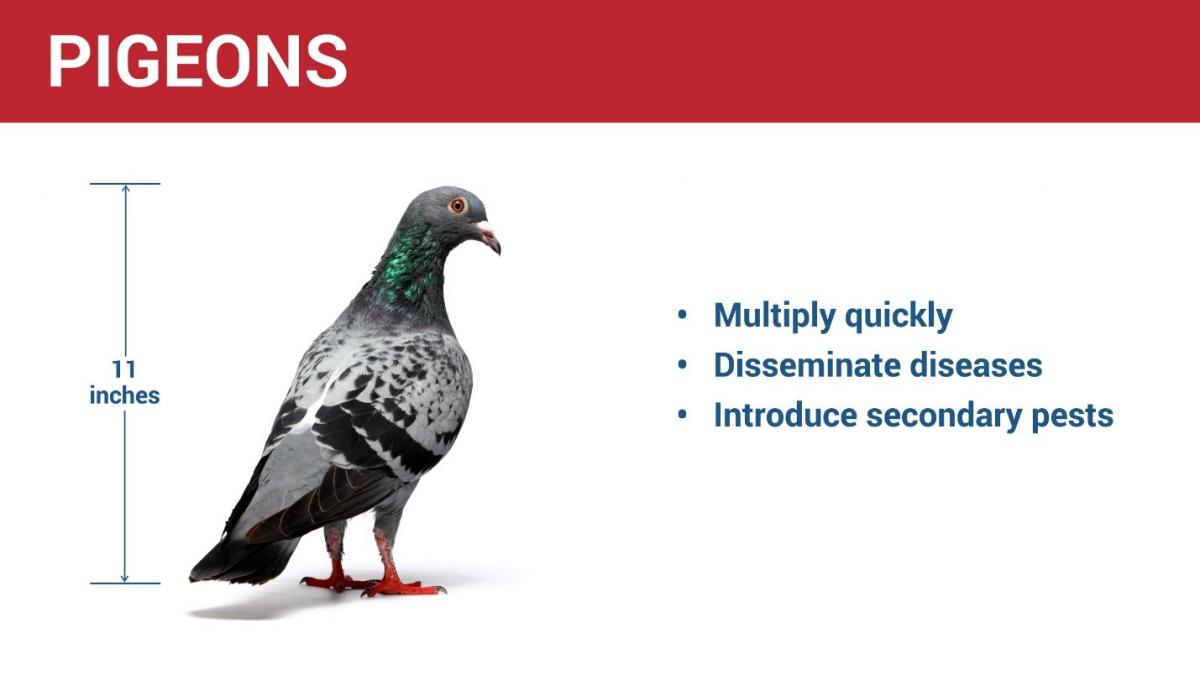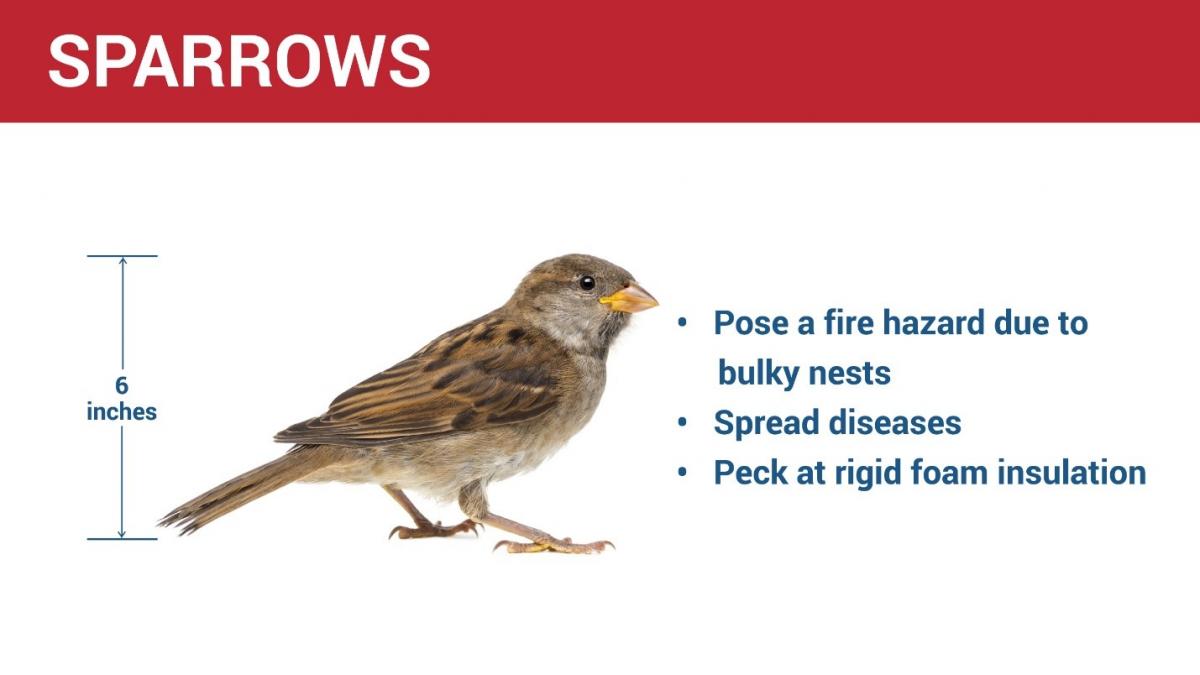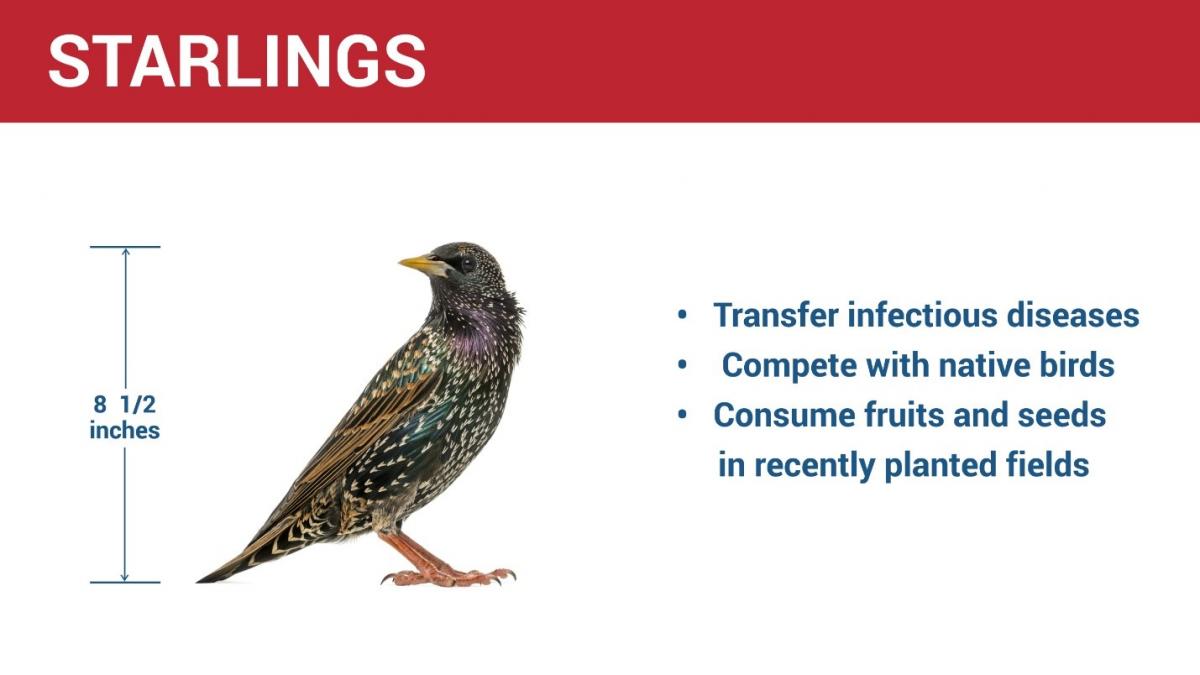You may have heard of the high-profile peanut butter recall of the early 2000s – and it probably sends shudders down your spine. With production halted, a large and expensive suit broke out, costing the company millions in legal fees and brand equity. What you may not know is that birds were the cause of the contamination.
Birds are typically displayed two ways: with Disneyesque optimism or Hitchcockian gloom. If you’re working in a commercial industry, especially food processing and manufacturing, commercial property management, or hotels and resorts, you know birds aren’t always so cheery. While, they’re not likely to actually attack you, they do present significant sanitation concerns.
Three common nuisance birds may ruffle your feathers. Learn more about each and the business risks they pose, below.
Giving a New Meaning to Carrier Pigeons

Let’s be clear: Carrier pigeons are pets, not pests. Most carrier pigeons are domestic animals who have been highly trained to return home, which is why they’re traditionally used to carry messages. While pest pigeons are not the same as carrier pigeons, they do carry things, but it’s usually not something you want. Termed flying rats for a reason, they can carry bacteria, parasites, fungi, and toxins.
Pigeons are typically gray with two black stripes on their wings and red feet. They can get up to 11 inches long in the United States, but there is a species in New Guinea that can grow to the size of a turkey. Able to reproduce year-round, and with a relatively short gestation period, pest pigeons can multiply quickly – and live, on average, three to six years.
Associated with urban areas, pigeons rely on humans for food, water, and shelter. Intentionally or not, people end up feeding these birds by leaving crumbs or spills in parks that pigeons are quick to clean up. Rafters and other available roosting sites offer pigeons the perfect place to settle down, protected from natural predators. If you think a pigeon – or group of pigeons – is getting too comfortable, it’s probably time to call in professional help.
Sparrows: Strength in Numbers

Sparrows, as a non-domestic species, don’t just pester our businesses, but also disrupt our native ecology due to their aggressive nesting habits. House sparrows are typically the species that will cause problems in your modern facilities. They feed on grain and disseminate diseases while carrying secondary pests, causing problems for your business.
Sparrows are stout birds with brown coloring and black streaks down their back. Males appear to have a black bib on their chest and white cheeks, while females have a brown-gray belly and breast. It’s thought that the bigger a male bird’s black marking, the older and more dominant they are. Sparrows are, on average, around six inches in length; but, despite their small stature, they can cause immense damage.
Because sparrows are social birds, and tend to nest – and feed – in large numbers, they are a big threat for commercial businesses, especially food processing and warehousing. They don’t like to travel much once they’ve made a home, so their large numbers often end up destroying a fairly small area. Much like pigeons, sparrows prefer man-made habitats. Prime targets for sparrow nesting include agricultural pastures and food-handling facilities.
Much Ado About Starlings

Like sparrows, starlings are not native to North America. However, you can blame Shakespeare for their continental introduction. New York resident Eugene Schieffelin was such a big Shakespeare fan that, in the 1890s, he tried to introduce all of the species of birds mentioned in Shakespearean plays. While not all of his attempts were successful, the release of starlings was. Mentioned in Shakespeare’s Henry IV, a starling is meant to annoy King Henry. True to literature, starlings continue to be a nuisance around the world.
Aptly named, starlings are dark-colored with white speckles resembling stars in the winter. In the summer, however, their feathers take on an all-over black, glossy appearance. Their wings are also short and triangular, giving them a five-point star appearance while in flight. They resemble blackbirds with a shorter tail and long beaks, averaging eight and a half inches long.
Starlings are boisterous, sometimes referred to as “bully birds.” They’re common near human settlements, feeding on lawns, fields, and discarded food items. While they can fly at up to 48 mph, they often roost or perch in large flocks, resting their wings. This species is known for its loud vocalizations, accumulation of droppings, and strong odors. They are likely to feed on food processing and agricultural product, and they can often become a distraction for office workers, impacting productivity and profitability.
Birds: An Unwanted Hazard
The harm caused by birds isn’t limited to the three species we named. In general, birds are dirty, contaminating everything they touch. The fungus Histoplasma capsulatum can grow under birds’ feathers and can become airborne in dry, windy conditions. In addition to fungi, they also spread viruses, bacteria, and other pathogens through physical contact and droppings. Introducing other things like lice, fleas, and mites, birds can play host to secondary pests that live on them or in their cozy nests. These issues not only endanger your customers’ and employees’ health, but also may have a big impact on your bottom line.
In addition to disease and sanitation concerns, birds can cause physical damage. Nests can sometimes block gutters, impede important machinery, or be a fire hazard near electrical equipment. Additionally, acidic bird feces can build up and cause corrosion and structural damage. These risks can cause expensive maintenance repairs, stall production, or jeopardize your employees’ safety and your facility’s performance.
Bird Exclusion with Sprague Pest Solutions
At Sprague, we understand the negative impact birds can have on your business. And while exterminating birds is not a viable option – due to limited effects and, in some states, legal protection – our bird exclusion service will protect you. By identifying high-risk areas and developing custom-fitting solutions, we’ll ensure birds can’t eat away at your profits.
Trust our commercial expertise, and protect your business from birds and other pests. Contact us today!

